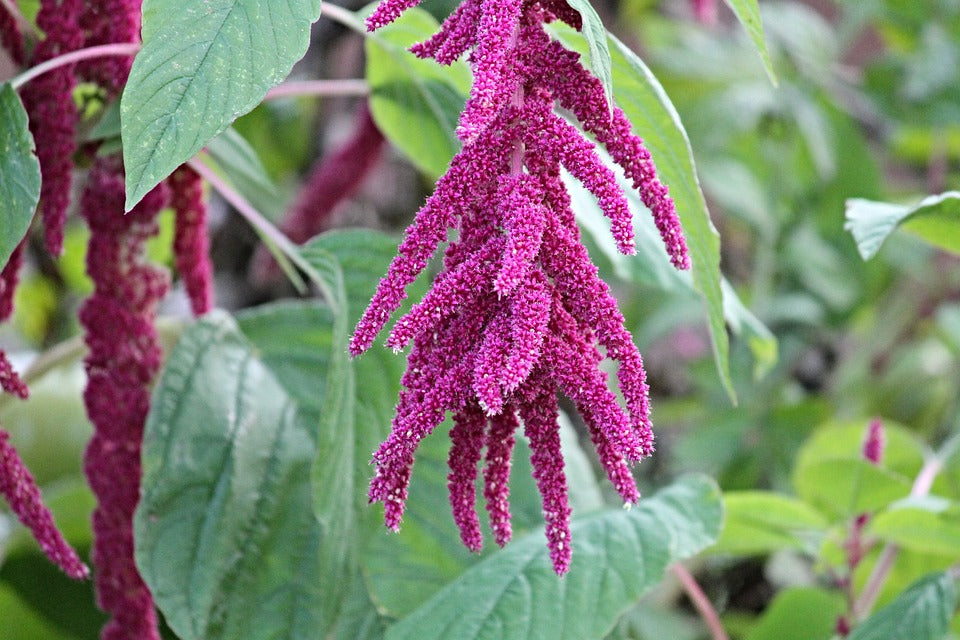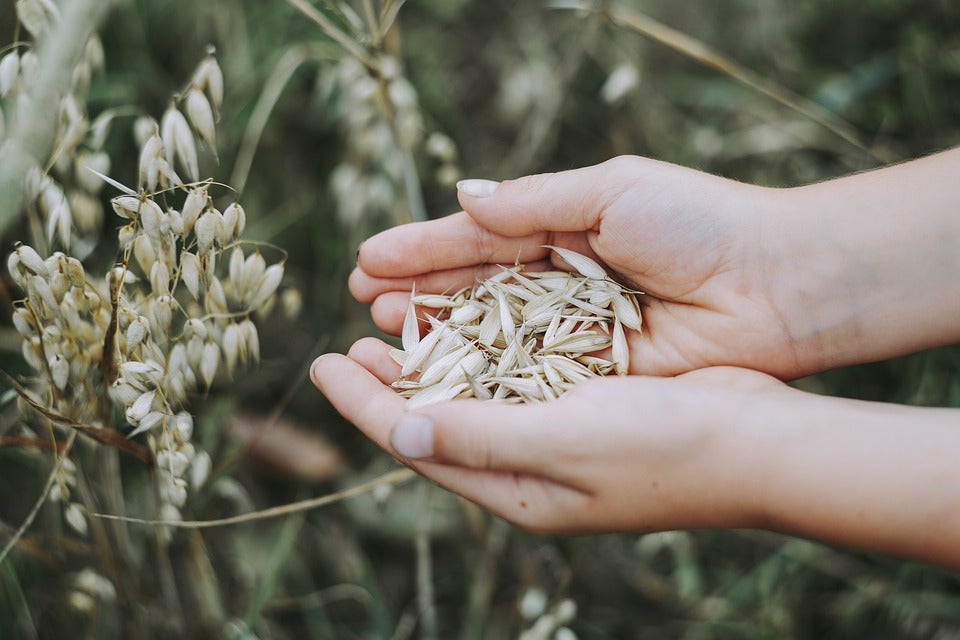By Michael Jenkins

Among other things, gardening is a way to explore. It connects us to history, botany, ecology, by allowing us to participate in those things directly. While most of our gardens focus on either decorative flowers and shrubs or delicious vegetables, it’s possible to grow some of the staple crops that have sustained humanity throughout its history. Growing wheat and other grains at home is an interesting challenge-slash-experiment for the home gardener, and may just be easier than you think. Let’s dig in and learn about growing grains at home and what they can do in your own garden.
We’ll open with an obvious point—many of us already grow a grain at home in the form of corn. Corn, also known as maize in some places, is a longstanding staple crop in the Americas and widely produced to this day. It’s a popular backyard crop for many gardeners—home-grown sweet corn is a real joy of the summer garden! This blog isn’t about corn, but we bring corn up as a reminder that you may already grow grains at home, and that it’s absolutely doable!

So in addition to corn, what other grains might you grow in your home garden. Wheat is a popular option—it’s a staple food for many of us, used to make bread and other baked goods. Wheat comes in many varieties, which are described in a few ways. There are both “winter” and “spring” types of wheat named for the time of year in which they are planted. Likewise, many popular wheat varietals are classified as “red”, “white”, or “amber” depending on the color of the grains. Adding to the complexity, wheat varieties are also classified by how much protein they contain, as different protein levels are better for different kinds of flour. It’s a complex issue, but hard red winter wheat or hard red spring wheat are probably the most versatile, used to make breads and other hard baked goods.
Wheat prefers a well-drained, loamy soil, and doesn’t require as much water as most vegetable plants. It also likes dense planting—20 to 25 plants per square foot! Under the right circumstances, this can yield 10 pounds/4.5 kilos of grain, which is impressive indeed. Wheat is ready to harvest when the kernels are crunch and hard; a common way to test them is to pick an individual kernel and bit down on it. Like many grains, wheat has to be threshed after harvesting, meaning that the grain has to be separated from the rest of the plant, called the “chaff”. You can do this in a number of ways: picking through by hand, sifting with a filter, or by pouring the wheat/chaff mix back and forth between two buckets in front of a strong fan that blows the chaff away.
Wheat’s not the only grain you can grow in a home garden. Depending on your climate and local conditions, there are a number of possibilities for home grain cultivation:
- Buckwheat is a popular grain in Eastern Europe and across Asia, and with good reason. It grows quickly—you can turn over a crop in a couple of months—and is easy to harvest because the grains fall away from the stalk on their own. It’s used to make many kinds of bread, porridge, and noodles, making it both versatile and tasty!

- Millet is a family of grains that are grown around the world as food crops; sorghum is a member of the millet family. They’re especially important as staple foods in Sub-Saharan Africa and South Asian. Having been cultivated by humans for over 7,000 years, millet comes in a number of varieties, many of which boast their characteristic “fox tail” seed heads. Depending on the type of millet grown, they can be used to make flour, porridge, or fermented to make alcohol.

- Amaranth is often used as a grain, making it appropriate for this list. Producing very small seeds, it now grows wild in many suburban neighborhoods due to its popularity as an ingredient in birdseed. Often cooked by boiling, it is a very nutritious plant, quick-growing plant that adapts readily to many environments. And unlike many other plants on this list, the young leaves are also edible and quite tasty!

- Oats are best known as the source of oatmeal, but as a grain they can also be used for flour. Better suited to cooler, wetter climates, oats are robust and hearty, and their chaff is a wonderful way to enrich your soil or compost with organic matter. The grain they produce is both nutritious and tasty, making them a popular choice in the norther parts of this hemisphere.

There’s obviously a lot more to this—growing grains is a complex subjects, steeped in history, culture, and the science of gardening and agriculture. We hope this blog inspires you to get started, however. As many grains can be planted quite densely, they’re an easy experiment to try in a container or in one corner of a raised bed. So if you’re looking for a new gardening adventure, try growing grains and home and see how it works for you!

Leave a comment